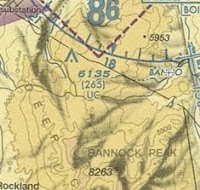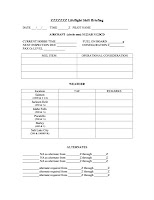A lot of flight instructors (CFIs) give advice on
Twitter (I am @DrATP, by the way), and this week a lot of it was wrong. Well, not exacly
wrong, but it was not helpful.
I teach Mathematics, Computer Science, and Flying. Only the last one involves muscles and only the last one can kill you (despite how you felt in any Math class you took). I take a different approach to each subject, and think hard about how to do each one better. Here's one big rule of flight instruction that I picked up along the way and adopted quickly:
Don't teach what to do: teach how to do it.
This means something different for each student. For a presolo student, it's "Don't pull so hard." Around solo, it becomes "The nose is too high." A Commercial student might hear "You're pitching up too quickly." For an ATP it could be "V2 is 121 knots." In flying, the instructor changes to accomodate the needs of the student, not vice-versa.
(This is part of what I like about Part 61 flight instruction. At the university, or in a more-structured Part 141 program, the student changes to accomodate the needs of the instructor, who represents the needs of the program. In a structured curriculum the instructor
must move on, even if some students don't understand.)
So all of a sudden I'm reading a lot of CFI tweets about flying the right airspeed in an emergency: that's telling you what to do.
I teach my students to fly the right
attitude in an emergency: that's
how to do it, but it's also easier and safer. And more of interest to the instructor than the student is that the lesson transfers to other parts of flying: fly attitude, not airspeed. So when I teach a multiengine student about Vyse, the proper speed for best climb performance after one engine fails, I teach him or her to fly the right attitude, not the right airspeed.
Of course it would be irresponsible of me to stop there. First of all, it's difficult to nail the attitude exactly, although usually people are too fast (which has a minimal impact on performance) rather than a little too slow (which really hurts performance). So, at some point the pilot has to fine-tune the airspeed. In the meantime, he or she has started to look for a place to land (better yet, turned toward the place they picked out
before the engine failed), or even started to troubleshoot the problem.
The alternative goes like this: I fail the engine. The student raises the nose and stares at the airspeed indicator, looking for 60. When the indicator says 60 the airspeed is more like 55. "Too slow!" they think, so lower the nose until it reads 60. But by then the speed is back to 65. "Too fast!" they think. This continues
ad impacto.
The hard part about instructing is seeing that what is so blankety-blank-blank obvious to you is not at all obvious to the student. This one certainly applies in Mathematics! But it applies to flying, too. We instructors need to look at things through the student's eyes, not our.
I'll close with a funny dialog between me and a student I was training in a 182. He pulled the throttle back a loooooong way on descent.
"One inch a minute, remember?" I said. This is the desired change in manifold pressure.
"I did that," he replied.
"No, that was more like five inches."
"No, I pulled it back
one inch!" he insisted, and mimed the throttle travel.
And he was right: there was only one inch of throttle travel. Ever since then, I tell pilots "One inch of manifold pressure a minute." You get the idea, I hope.
Labels: attitude, emergency, flight instruction






